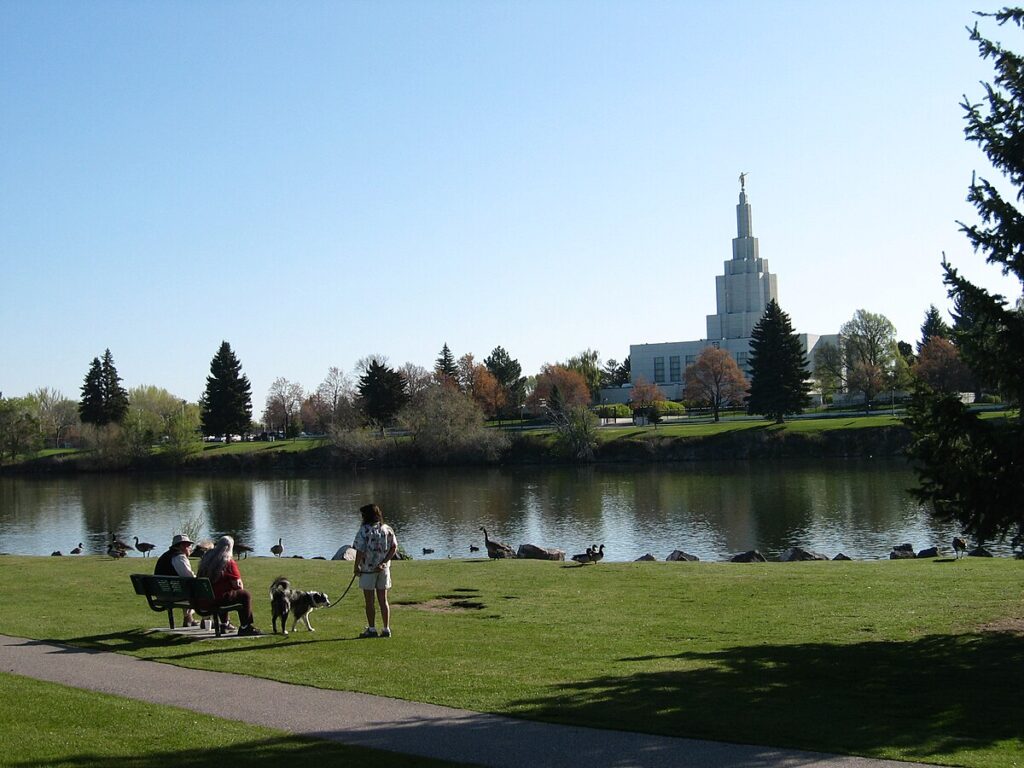
Moving to Idaho Falls, Idaho: A Comprehensive Relocation Guide
Considering moving to Idaho Falls, Idaho? This Eastern Idaho city offers nuclear research, affordable living, and outdoor access. With approximately 68,000 residents in 2025, Idaho Falls combines small-city character with research employment and gateway to Yellowstone and Grand Teton.
Demographic Profile to Consider If Moving to Idaho Falls:
Idaho Falls’ 2025 population is approximately 68,000 residents in this Bonneville County city along the Snake River in Eastern Idaho. The median age is around 34 years, with families, nuclear industry professionals, students, and outdoor enthusiasts. The population is approximately 88% White, 9% Hispanic, 2% Native American. Idaho Falls features the scenic Snake River Greenbelt through downtown, the Idaho National Laboratory’s influence, growing residential areas, and serves as Eastern Idaho’s commercial hub. The city attracts INL employees, families seeking affordability, and those wanting access to Yellowstone region. Idaho Falls appeals to scientists, engineers, families, and outdoor enthusiasts seeking small-city living with research employment and recreation access. The community values education, family, outdoor lifestyle, and the nuclear research mission. Find trusted local services for moving, living, and working in Idaho Falls.Idaho Falls Relocation Directory
Cost of Living to Consider If Moving to Idaho Falls:
Idaho Falls offers exceptional affordability for Idaho. Median home values range from $340,000 to $460,000 in 2025, significantly lower than Boise while providing quality living and good wages from INL. The median household income is approximately $68,000. Rental properties average $1,200 to $1,700 monthly. Idaho’s state income tax is flat 5.8%. Overall cost of living is low for the West, making Idaho Falls highly attractive for families, INL employees, and those seeking affordable Idaho living with employment stability. The city provides tremendous value with research employment paying well relative to costs. Housing costs create accessibility while maintaining proximity to Yellowstone and Grand Teton National Parks (90 minutes).
Economy and Job Market:
Idaho Falls’ economy centers on the Idaho National Laboratory (INL), healthcare, retail, and agriculture. INL is the dominant employer with thousands of scientists, engineers, and support staff conducting nuclear energy research and national security work. Eastern Idaho Regional Medical Center provides healthcare employment. Retail serves the regional population. Agriculture including potatoes and farming remains significant. The government and research sectors provide high-paying jobs. Typical industries include nuclear research, healthcare, retail, agriculture, and government. The economy benefits from INL’s stability and high-wage employment. The research mission attracts educated professionals.
Education:
Idaho Falls School District 91 serves city students with schools including Idaho Falls High School, Skyline High School, and various elementary and middle schools. School quality is competitive with INL employees’ advocacy. The University of Idaho operates a campus in Idaho Falls. Idaho State University is in nearby Pocatello. The educational infrastructure benefits from the educated INL workforce creating strong schools and university presence.
Recreation and Lifestyle:
Idaho Falls offers the Snake River Greenbelt, a scenic paved path along the river through downtown with waterfalls and recreation. Residents enjoy world-class access to Yellowstone National Park (90 minutes), Grand Teton National Park (2 hours), and Jackson Hole (2.5 hours). Nearby recreation includes fishing, camping, hiking, skiing at Grand Targhee and Kelly Canyon, and outdoor activities year-round. The Idaho Falls Zoo provides family entertainment. Downtown features restaurants and the Civic Auditorium for performances. The lifestyle emphasizes outdoor recreation, family activities, affordable living, and gateway access to premier destinations. The four-season climate enables skiing, fishing, camping, and varied activities. The community values education, family, outdoor lifestyle, and the INL mission. Living in Idaho Falls means accepting smaller-city limitations, cold winters (serious cold—regular subzero temperatures), and distance from major metros while enjoying Yellowstone proximity, research employment, and affordable living with access to world-class recreation.
Healthcare and Services:
Idaho Falls residents access comprehensive healthcare through Eastern Idaho Regional Medical Center, Mountain View Hospital, and medical facilities throughout the area. The healthcare infrastructure serves Eastern Idaho as a regional medical hub.
Transportation:
Idaho Falls is accessed via Interstate 15, U.S. Highway 20, and various corridors. Idaho Falls Regional Airport provides limited commercial service with connections. Targhee Regional Public Transportation operates limited bus service. Most residents use personal vehicles. Typical commute times within Idaho Falls are short. The location provides access to Yellowstone, Jackson, and Salt Lake City (3 hours) while being somewhat isolated.
Conclusion:
Moving to Idaho Falls in 2025 offers affordable Eastern Idaho living with nuclear research employment, Yellowstone access, and family atmosphere. The city’s combination of INL high-wage jobs, low housing costs, and gateway location makes it ideal for scientists, engineers, families, and outdoor enthusiasts seeking small-city Idaho lifestyle where nuclear research meets wilderness access and affordability defines living 90 minutes from Yellowstone in Eastern Idaho’s hub.

